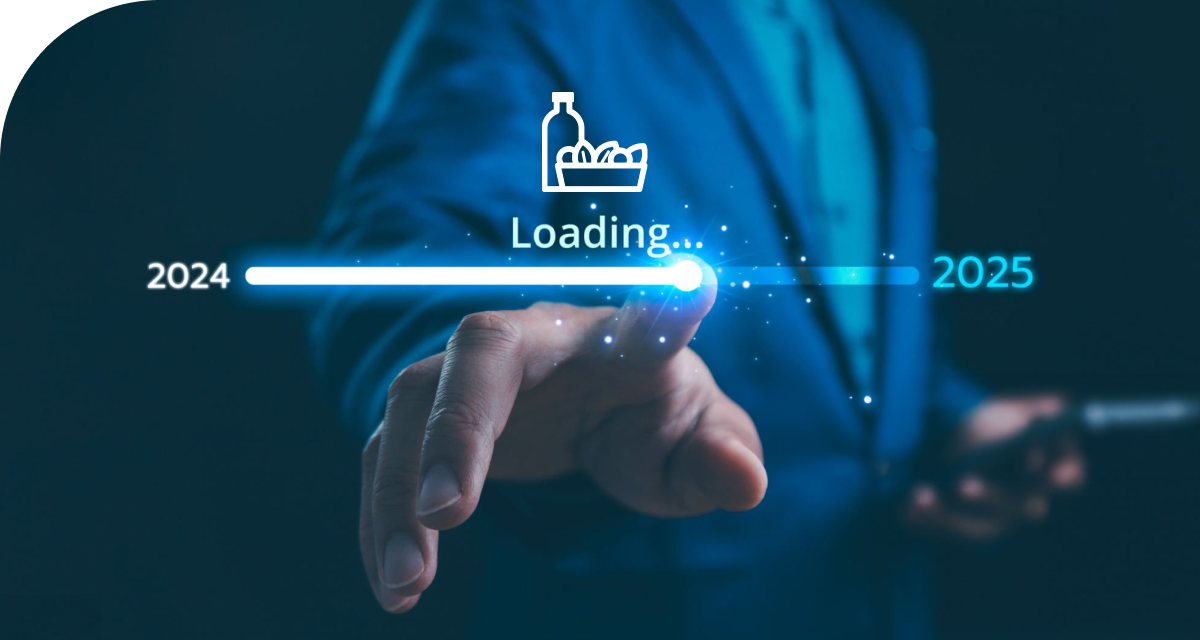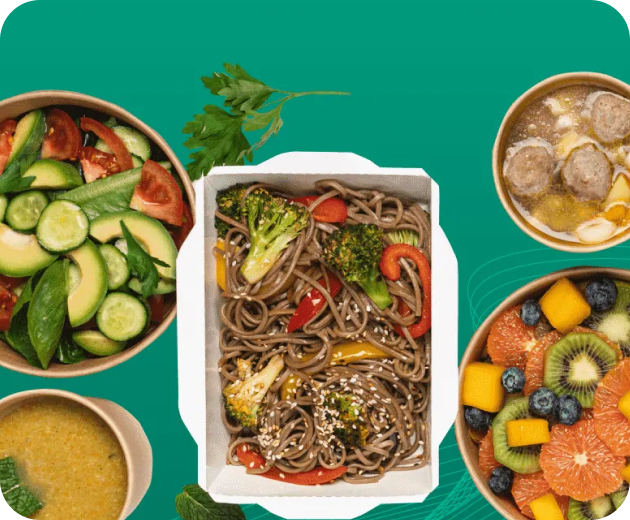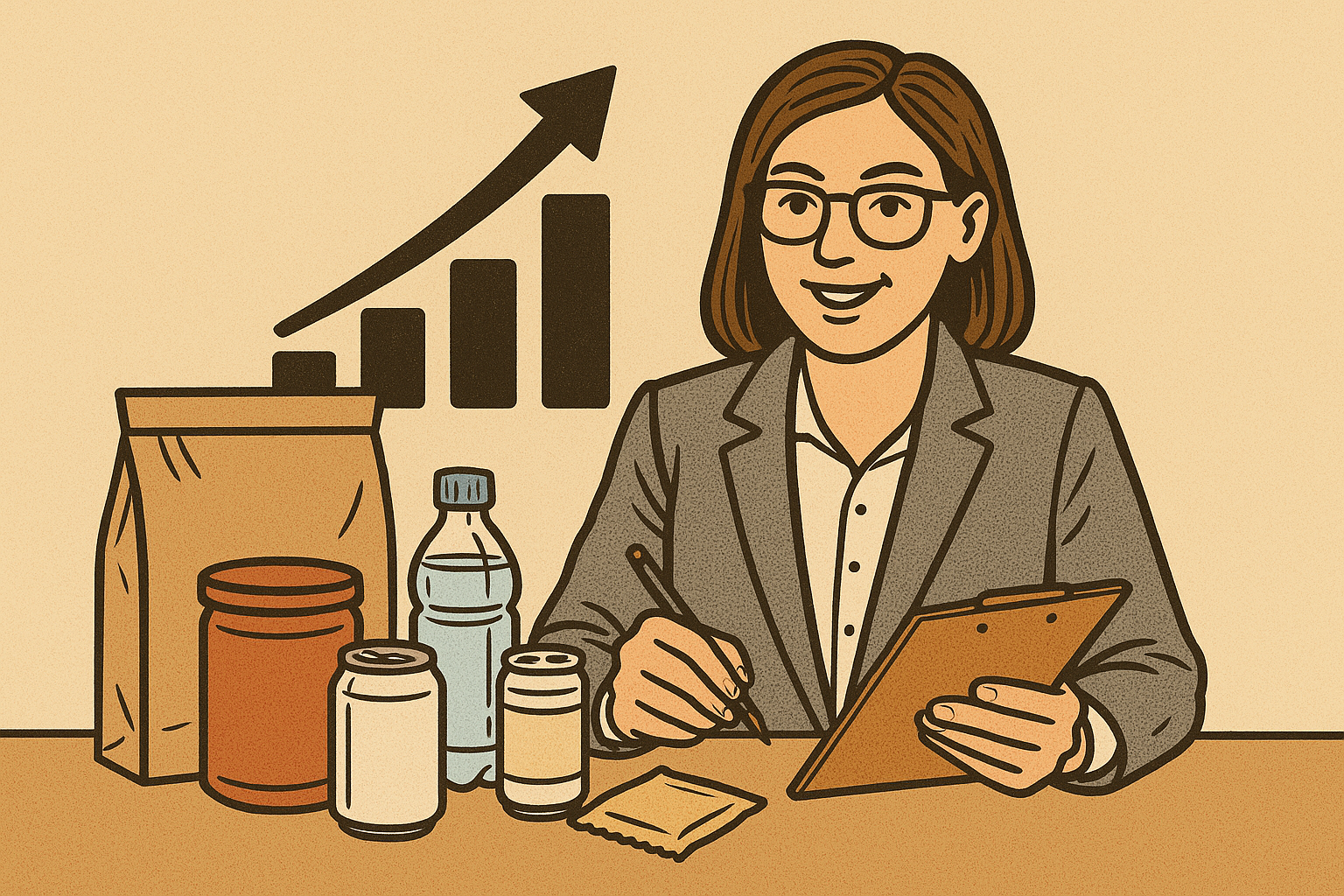Food Prediction in 2025 and Beyond
In 2025, food innovation will break new ground; by 2050, it will completely rewrite the story of sustenance.
As global challenges reshape how we produce, consume, and innovate around food, the industry is on the brink of revolutionary changes.
With advancements in food analytics, the integration of AI in the food industry, and growing consumer demand for sustainable options, the stage is set for an unprecedented evolution.
But what does food prediction in 2025 really mean, and how can it shape our understanding of what’s to come?
Insights from the Present: Understanding the Future of Food

The 2024 Trend Report revealed an accelerated shift in consumer preferences, emphasizing wellness, indulgence, and convenience.
As we enter 2025, these trends are manifesting in more tangible ways, such as the adoption of food innovation technologies to address environmental challenges and meet consumer needs. We’ve already seen how understanding future trends can manifest popular products in the real world.
Take the increasing popularity of plant-based proteins and cell-cultivated meat, for example. According to Synthesis, a report predicts that by 2034, a “Resilient Adaptation” scenario—relying on technological innovations and alternative food sources—has a 62% probability of dominating the food landscape.
This shift is not just about sustainability but also about profitability, as food prediction tools enable companies to stay ahead of trends and cater to evolving demands.
What Does Food Prediction Really Mean?
At its core, food prediction is about leveraging food analytics to identify marketing trends, understand consumer behavior, and innovate efficiently.
It’s no longer enough to follow what’s trending; companies need to anticipate what will trend. This capability is a game-changer for the industry, offering a pathway to mitigate risks, maximize profits, and deliver products that resonate.
For instance, using AI-powered dashboards like the Innovation Dashboard enables food companies to analyze ingredients, menu items, and emerging needs.
This insight not only saves time but also drives smarter decision-making. Imagine predicting the rise of “spookiness” as a consumer need in food or the surging popularity of items like martinis and bourbon—these are not guesses but data-driven realities made possible by advanced analytics.
2025 is already here for food and beverage. Discover the biggest trends shaping flavor, health, and innovation—plus what they mean for your next move.
Food Prediction in 2025: Trends and Technologies
The food industry in 2025 is poised for groundbreaking transformations. Key areas of food innovation include:
Sustainable Alternatives
Cultivated meat, insect-based proteins, and algae are set to take center stage as scalable, eco-friendly food sources. With resource scarcity looming, these innovations will be critical in bridging the food gap.
Smart Agriculture
AI and IoT-enabled farming practices are redefining efficiency. From climate-resilient crops to precision agriculture, the integration of technology ensures better yields with minimal environmental impact.
Personalized Nutrition
Tailored meal solutions based on individual health data and preferences are becoming mainstream. Consumers are demanding more control over their diets, and companies are responding with hyper-personalized offerings.
AI in Food Industry
AI is driving faster innovation cycles. From predictive trend analysis to optimizing ingredient combinations, AI tools empower food producers to conceptualize and launch products in record time.
Food prediction in 2025 is not just about what we eat; it’s about reimagining the entire food ecosystem.
What About 2035 and Beyond?
Looking further ahead, the food industry faces a complex interplay of challenges and opportunities. By 2050, global food demand is expected to rise by 35%–62%, driven by population growth and changing diets. Traditional food production methods will struggle to keep pace, making sustainable practices and alternative food sources indispensable.
Here’s what the next two decades might bring:
- A World of Choice
By 2035, menus might feature lab-grown steak alongside plant-based ice cream, with AI-curated pairings for an optimal dining experience. The rise of food trends like hyper-local sourcing and zero-waste dining will reflect consumers’ commitment to environmental stewardship. - Global Collaboration
Food security will hinge on global cooperation. Innovations in crop genetics, water conservation, and waste reduction will shape the future, as countries work together to combat the effects of climate change.
Will There Be Food in 2050?
While science fiction suggests nutrient pills or vacuum-packed meals as future staples, the reality is more nuanced.
People’s love for food as an experience means companies will continue innovating with traditional and modern techniques. Expect a blend of nostalgic flavors and futuristic formats.
Climate change, overconsumption, and resource scarcity present real challenges, but the food industry has remarkably adapted. Whether through AI in the food industry, cultivated proteins, or advanced analytics, the solutions are within reach.
Proactive measures like reducing food waste (currently 25% of all production), adopting sustainable farming practices, and embracing alternative proteins will be critical. Without them, access to safe and nutritious food may become a luxury rather than a right.
What is the prediction of food in the future?
Food prediction in 2025 is about more than forecasting trends, it’s about creating a roadmap for the future. With the integration of food analytics and food innovation, the industry is well-positioned to meet the challenges of tomorrow.
But the journey doesn’t end there. As we look toward 2050, the innovations we invest in today will shape the food landscape for future generations.
By leveraging tools like AI and embracing sustainable practices, food companies can ensure they remain at the forefront of this dynamic industry. The future of food is bold, innovative, and filled with opportunity, are you ready to taste it?
FAQs about food prediction in 2025 and beyond
Food trend forecasting is the practice of analyzing consumer behavior, cultural shifts, and technological advances to anticipate what people will want to eat in the future. It matters because it helps brands reduce risk, stay relevant, and design products that meet evolving consumer needs.
Tastewise uses AI-driven analytics that scan billions of data points across social media, recipes, restaurant menus, and retail shelves. This real-time view helps identify which flavors, ingredients, and claims are growing, so brands can act on tomorrow’s opportunities today.
AI, machine learning, and IoT-powered agriculture are transforming how the industry forecasts demand. These tools enable predictive modeling, ingredient pairing insights, and early detection of emerging consumer needs, turning complex food data into actionable direction for innovation.
Personalized nutrition, AI-optimized product development, and climate-resilient farming are also reshaping how food is made, marketed, and consumed.
By leveraging predictive insights, brands can test concepts, refine packaging claims, and launch new products with greater confidence and speed. Instead of chasing trends, they can lead them, developing offerings that resonate with health, sustainability, and experience-driven consumer demands.




